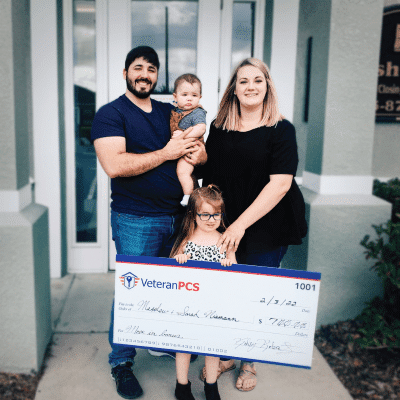For military families, pets are cherished members of the household, making a Permanent Change of Station (PCS) move with them a priority task that requires careful planning and preparation. Transitioning to a new home, especially in a different state or country, presents unique challenges and considerations for pet owners. This guide is tailored for active duty military personnel, providing essential advice on navigating a PCS move with pets, focusing on ensuring their safety, comfort, and compliance with regulations.
Understanding the complexities of moving with pets is crucial for a smooth transition. This involves considering your pet’s needs, researching travel requirements, and preparing necessary documentation well in advance. Whether your move is domestic or international, this article will help you make informed decisions and prepare adequately, ensuring your pet is part of a seamless relocation process.
Key Considerations for PCSing with Pets
Assess Your Pet’s Age, Breed, and Health
- Age and Breed: Some pets, especially older animals or specific breeds, may find travel more stressful. Additionally, certain breeds may face restrictions in your new location or with transportation options.
- Health: Ensure your pet is in good health to travel. Consult your veterinarian to assess fitness for travel and discuss any concerns, such as anxiety or motion sickness.
Research Pet Travel Requirements
- Domestic Moves: Each state may have its own entry requirements for pets. Common requirements include rabies vaccination and a general health certificate.
- International Moves: International moves often have more stringent requirements, including specific vaccinations, quarantine periods, and sometimes even breed restrictions. Websites like the USDA APHIS Pet Travel provide country-specific information.
Obtain Necessary Paperwork
- Vaccination Records: Up-to-date vaccination records are a must. Most destinations require proof of rabies vaccination at a minimum.
Health Certificates: A health certificate from a licensed veterinarian is often required for travel and must be obtained close to your departure date.
Buying or Selling?
Connect with VA Loan Expert
Explore Pet-Friendly Transportation Options
- Commercial Airlines: When flying, research airlines with pet-friendly policies. Understand the difference between in-cabin, checked baggage, and cargo options for pet travel.
- Pet Relocation Services: For a more hands-off approach, consider using pet relocation services. These companies specialize in handling the logistics of moving pets, including paperwork and transportation.
Prepare Your Pet for the Move
- Microchipping: If not already microchipped, now is the time. This permanent form of identification can be a lifesaver if your pet gets lost during the move.
- Updating Identification Tags: Ensure your pet’s collar has an updated tag with your name, phone number, and new address if known.
Making the Move: Tips for a Smooth Transition
- Familiarize Your Pet with Their Travel Crate: Spend time getting your pet comfortable with their crate or carrier well before the move. This can reduce stress and anxiety during travel.
- Pack a Pet Travel Kit: Include food, water, bowls, a leash, waste bags, medication, and a favorite toy or blanket to provide comfort and familiarity.
- Maintain Routine: As much as possible, keep your pet’s routine consistent in the days leading up to and following the move. This includes feeding times, walks, and playtime.
Summary
Moving with pets requires additional planning and consideration, but with the right preparation, your PCS move can be a smooth transition for your entire family, furry members included. By assessing your pet’s specific needs, researching and complying with travel requirements, preparing necessary documentation, and ensuring your pet is comfortable and secure, you can navigate the challenges of PCSing with pets successfully. Remember, the well-being of your pet is paramount, and thorough preparation is the key to a stress-free move for both you and your beloved animal companions.
Buying or Selling?
Connect with VA Loan Expert
FAQ
What should military families consider when researching schools and educational facilities?
Researching schools and educational facilities is crucial for military families planning a PCS overseas. Consider factors such as curriculum offerings, language programs, special education services, extracurricular activities, and the availability of educational support for military-connected students. It’s also essential to understand the enrollment process, admission requirements, and any necessary documentation for school registration in the new location.
How can military families manage the financial aspects of a PCS overseas move?
Managing the financial aspects of a PCS overseas move requires careful budgeting and utilizing available resources. Assess your expenses, create a detailed budget, and explore military-specific financial assistance programs, such as the Overseas Cost of Living Allowance (COLA) and the Dislocation Allowance (DLA). Additionally, familiarize yourself with the exchange rate, banking options, and potential tax implications in your new location to effectively manage your finances during the transition.
How can military families support children and family members emotionally during a PCS overseas?
Supporting family members, especially children, emotionally during a PCS overseas is essential. Communication is key – encourage open discussions about feelings, concerns, and expectations regarding the move. Take advantage of military support programs, such as counseling services or support groups, to provide additional emotional support. Helping family members stay connected with their friends and established routines can also aid in easing the emotional impact of the move.
What steps should military families take to integrate into their new community?
To integrate into the new community, military families can engage in various activities. Attend orientation sessions provided by the military installation, join local community groups or clubs, and participate in events or volunteer opportunities. Connecting with other military families and reaching out to local residents can help foster a sense of belonging. Embracing the local culture, traditions, and exploring the new environment can also contribute to a smoother integration process.
Questions about Military Transition help?
Managing a PCS Move with Children: Strategies for Military Families
For military families, navigating a Permanent...
The Ultimate PCS Binder Guide: Get Organized for Your Move
Imagine you've just settled into the rhythm of...
PCSing to Another State: How VeteranPCS Eases the Transition with Veteran Real Estate Experts
Introduction Permanent Change of Station (PCS)...











